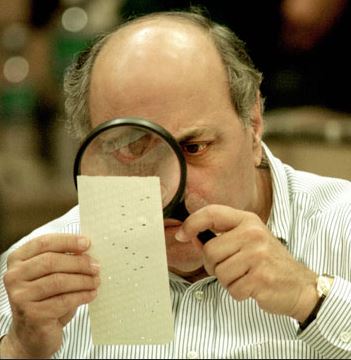
Elections and paper audit trails – The Big Bait and Switch.
From the perspective of election modernization, the United States has been marching steadily backward since shortly after it was supposed to start marching forward.
After the debacle of the 2000 Presidential election and the case of Bush v. Gore (when notorious issues with paper balloting led the tally in Florida, and the result of the election, to be suspect), The Help America Vote Act and other legislation were enacted to supposedly bring US elections out of the 19th century.
But soon after, by 2005, the election administration culture in the U.S. began to push back on modernization. All forms of electronic voting – from DRE machines at the polling place to online voting – were to be considered suspect, due to the notion that they could never be 100% trusted to be free of tampering. For whatever reason, the long history of election fraud and tampering with paper balloting was to be ignored. Paper ballots were to be considered the only acceptable way to record and tally votes. Hand recounting, the same flawed process revealed to all Americans in 2000, suddenly was the only manner to be trusted.
The new savior of democracy, according to an ever-growing majority of the election administration and election “integrity” community, was to be the VVPAT, or Voter Verified Paper Audit Trail.
The premise, as sold, is that electronic voting can not be trusted unless it includes some kind of paper “receipt” system which can, if needed, be counted by hand later “just in case” there are problems with the electronic voting tallies.
It sounds harmless enough. Electronic voting should have some sort of paper “back up”.
Unfortunately, nobody seems to have ever bothered thinking this concept through to its logical conclusion.
The VVPAT concept then completely infiltrated our election admin culture over the next decade, to the extent that today virtually everyone – from an entire election admin community, to elected officials, to the public itself – universally believes that no voting system without a VVPAT can be trusted.
One might assume that what all this has led to is newer electronic voting machines that include a paper receipt. And perhaps old lever voting machines, used in many large US states for decades and universally trusted during that time, might also be replaced by modern digital machines with receipts.
But that is not what has happened. Electronic machines have been replaced in most cases with optical scanned paper balloting.
Optical scan is NOT electronic voting. The voter fills out a paper ballot with a marker, then feeds the ballot into a scanner. The scanner tabulates the results. But since nobody trusts the electronic counts anymore, hand recounting of the paper ballots has the final word. And all the historic flaws with optical scan – an obsolete technology introduced over 50 years ago – remain.
In 2004, less than 40% of US voters cast their votes on paper ballots. By 2012 it reached 60%.
What we were sold with the concept of the “paper audit trail” was a reliable means to check the results of electronic voting.
What we got was paper ballot voting.
More importantly, what we still have are some of the lowest voter turnout averages in the world. Amid all the hysteria over votes and hackers, will anybody ever bother to care about anemic participation again?
Not as long as they keep insisting we rely on archaic methods with which to record our participation.
